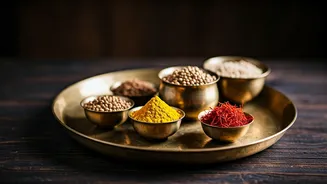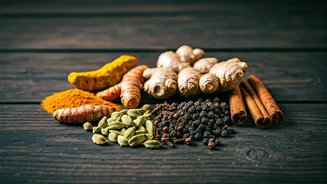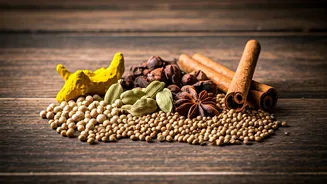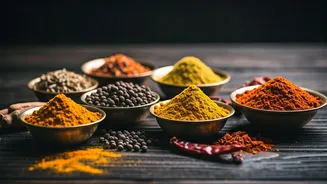Mindful Eating Practices
The first essential ritual involves mindful eating. This practice centers on being present and fully engaged while eating, paying close attention to the
colors, textures, aromas, and tastes of the food. It encourages slow eating, enjoying each bite, and refraining from distractions like television or mobile devices. This ritual emphasizes appreciating the meal, understanding where the food comes from, and acknowledging the effort that went into preparing it. The mindful eating approach also includes setting a positive intention before the meal, expressing gratitude for the food, and eating in a calm setting to enhance the experience. By fostering awareness of hunger and fullness, this practice helps to avoid overeating and promotes better digestion. Furthermore, mindful eating allows the body and mind to connect, providing a holistic and enriching experience centered around food and well-being. Practicing this ritual enhances one's relationship with food and promotes better overall health.
Importance of Family Meals
Another prominent eating ritual centers on the tradition of sharing meals with family. It involves setting aside time each day to eat together, creating a space for social connection and reinforcing family bonds. This ritual often sees family members gather around a table, sharing food and stories, and fostering communication. Family meals provide opportunities to model healthy eating habits for children and strengthen intergenerational relationships, passing down food traditions. The shared meals also offer emotional support and create a sense of belonging among family members. The process promotes respectful communication, allows for cultural exchange, and helps create memories. The tradition of family meals is vital in Indian culture, playing a critical role in creating a cohesive home environment. These shared eating experiences nurture a sense of belonging, respect, and mutual support, helping to strengthen family unity and promote overall well-being.
Sacred Food Offerings
In Indian culture, the ritual of offering food before eating has a profound spiritual significance. This practice, often referred to as 'Anna Daan', includes presenting food to deities or elders to seek blessings. This ritual acknowledges the source of food and expresses gratitude for its availability. The offering is typically prepared with care and devotion, symbolizing respect for life and the interconnectedness of all beings. Food is considered sacred, and this ritual provides an opportunity to reflect on the importance of nourishment and sustenance. Before eating, a small portion of food is often set aside for animals or the less fortunate, reflecting the value of giving and sharing. These food offerings are a sign of gratitude and a way of respecting nature, promoting a deeper connection with the spiritual aspects of life. In doing so, this practice reminds individuals of the greater value of their meals and creates a sense of harmony between the physical and spiritual aspects of daily living.
Ayurvedic Dietary Principles
Ayurveda, the ancient Indian system of medicine, offers dietary principles deeply woven into eating rituals. These principles emphasize the consumption of fresh, seasonal, and locally sourced foods to balance the body's doshas (Vata, Pitta, and Kapha). Rituals often involve creating meals that contain a mix of flavors, textures, and food types. Another aspect is the timing of meals, with specific eating times considered optimal for digestion and energy levels. Ayurvedic practices encourage mindful consideration of the body's needs and promote a harmonious relationship between food and overall well-being. Incorporating Ayurvedic principles into eating rituals promotes not only physical health but also helps individuals gain a deeper understanding of their bodies and cultivate a balanced lifestyle. This approach helps people make food choices that promote balance, vitality, and optimal health, encouraging individuals to listen to their bodies and make conscious eating choices.
Incorporating Spices and Herbs
The final eating ritual involves the use of spices and herbs. Indian cuisine is known for its diverse use of spices and herbs, and this practice extends beyond flavor enhancement to include health and wellness benefits. Spices such as turmeric, ginger, and cumin are often used for their medicinal properties. These additions can improve digestion, boost immunity, and provide essential nutrients. Rituals often involve preparing meals with a variety of spices, combining flavors and textures to create a satisfying and balanced dish. The inclusion of spices and herbs adds depth and complexity to the food, while also contributing to overall health. It reflects a holistic approach to food, where taste, health, and nourishment are considered together. This approach enriches the dining experience and enhances the overall well-being, helping individuals connect with the rich cultural heritage and timeless wisdom of Indian cuisine.













